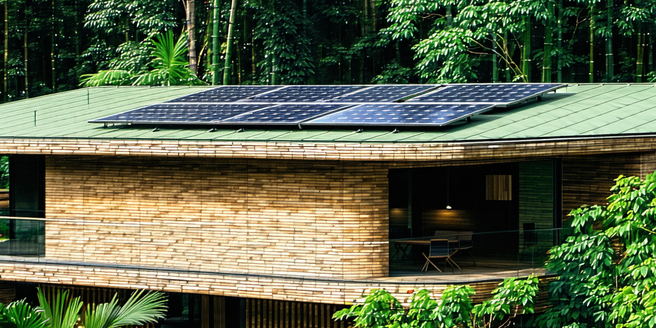Green Building Practices For Cost Reduction

Understanding the Basics of Green Building Design
Green building design focuses on increasing the efficiency of resource use — energy, water, and materials — while reducing building impacts on human health and the environment during the building’s lifecycle. It involves practices and technologies that are designed to minimize the negative environmental impact of buildings. Sustainable site planning, improving energy efficiency, using renewable energy sources, conserving water, and optimizing operational and maintenance practices are key components. Understanding these basics can help architects and builders craft spaces that are not only environmentally friendly but also economically beneficial. Implementing these principles effectively results in increased property value, reduced operational costs, and a healthier living environment, making it essential for future-proofing investments against the backdrop of an increasingly eco-conscious market and regulatory environment.
Energy-Efficient Technologies and Their Impact on Costs
Integrating energy-efficient technologies is an integral part of minimizing operational costs in green building projects. Technologies such as LED lighting, high-efficiency HVAC systems, and smart thermostats enable significant reductions in energy consumption, translating to cost savings. Advanced building materials like insulated panels and low-emissivity windows enhance thermal performance, reducing the dependency on heating and cooling systems. Additionally, investing in onsite renewable energy sources like solar panels can drastically cut energy bills over time. While the initial investment in these technologies can be higher, the long-term financial benefits often outweigh the costs. As utility prices continue to rise, the payback periods for these technologies are getting shorter, making them a prudent choice for anyone looking to reduce expenses while contributing to a sustainable future.
Sustainable Materials: Balancing Quality and Expense
When selecting materials for green building projects, finding the right balance between quality and cost is crucial. Sustainable materials offer durability and low environmental impact, often leading to longer lifespans and reduced maintenance costs. Bamboo, recycled steel, and reclaimed wood are popular choices that bring both aesthetic appeal and sustainability to a structure. It is essential to evaluate each material’s specific properties to ensure it meets the project’s requirements. The upfront costs of these materials may initially seem higher, but their longevity and the savings on repair costs can result in lower overall expenses. Additionally, sustainable materials often come from local sources, reducing transportation costs and emissions. By carefully considering material choices, builders can achieve high-quality, sustainable outcomes without overshooting budgets.
Implementing Water Conservation Solutions
Water conservation is a vital component of green building practices, directly affecting operational efficiency and cost-effectiveness. Innovative solutions such as low-flow fixtures, rainwater harvesting systems, and greywater recycling significantly reduce water consumption in buildings. These systems not only cut water utility bills but also lessen the strain on municipal water supplies. Additionally, they contribute to the preservation of natural water resources, benefiting the environment at large. Implementing xeriscaping, which involves landscaping with native, drought-resistant plants, can further decrease water usage. The initial investment in these technologies may pose a challenge, but the return on investment becomes evident over time through reduced costs and improved sustainability metrics. With increasing water scarcity issues, these water conservation practices are not just beneficial but necessary for future-resilient building strategies.
The Long-Term Financial Benefits of Green Certification
Obtaining green certification for a building offers numerous long-term financial benefits, including increased marketability and property value. Certification systems like LEED or BREEAM signal a commitment to sustainability, attracting eco-conscious tenants and buyers willing to pay a premium for environmentally friendly spaces. Certified buildings often enjoy lower insurance premiums and operational costs, thanks to their efficient resource use and durable construction. In addition to financial benefits, green certification often contributes to a healthier environment within the building. Furthermore, many governments offer tax incentives and grants for certified green buildings, providing an immediate financial advantage. As the demand for sustainable development rises, the value of having a green certification continues to grow, making it a wise investment for owners looking to enhance property value while promoting environmental responsibility.